Jim Biddulph’s 2019 Design Highlights
Whilst 2019 has had its fair share of controversy and an alarmingly apparent deepening of social and political division, there is still much that we can celebrate and congratulate from the world of design. Looking back to the beginning of the year and the first trade shows, product launches and creative initiatives through to now, one is reminded that the creative world of design still offers us some hope, even in times of strife.
Carrying the momentum of 2018 forward, the drive to reduce plastic consumption has continued to feature heavily in design and mainstream media channels. Organisations such as Everyday Plastic, who featured in our plastic documentary last year, have kicked on in terms of widening awareness of the sheer volume of plastic that we as consumers go through, as well as what happens to it after we use. Their damning findings have helped to highlight the disappointing myth surrounding recycling and that much more needs to be done by both those making plastic products and those responsible for processing our waste, namely local councils and the government.
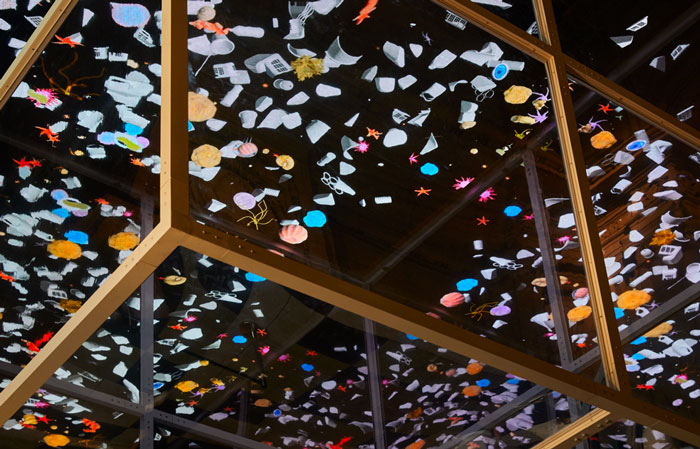
Design trade shows, which are generally considered platforms for the pinnacle happenings in contemporary design, have thrown up numerous examples of work that either seeks to highlight the plight, reuse the excess or attempt to reduce the initial usage of plastics, as well as other disposable consumables. During London Design Festival, Sam Jacob was commissioned to create an overhead installation in the grand lobby of the V&A. Titled Sea Things the piece consisted of a large 2-way mirror box with images of plastic waste projected onto all sides and sought to prompt thought and discussion around the seemingly infinite mass of plastic waste piling up in the oceans. The notion of curbing plastics usage and reusing our waste more effectively is not a new one to visitors of Dutch Design Week and once again there were many designers and projects offering insightful reimaginings for plastic waste. What was perhaps a little newer and with it hopeful, were collaborations between waste-conscious manufacturers and creative-minded designers. Simone Post’s speckled rug made from crumbed Adidas trainers and Wendy Andreu’s innovative transformation of Sunbrella acrylic textile into a new composite material surely begins to show the way for both parties to work together in order to ‘close the loop’?
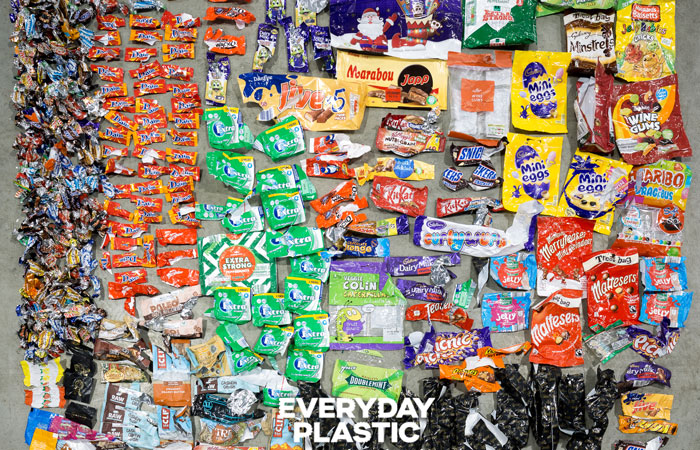
In truth, Dutch Design Week tends to offer the largest and broadest range of ambitious new work that challenges our approaches to materials and products alike. At the heart of the show sat The Bio-Base Camp, a huge architectural structure constructed of cross-laminated timber (CLT). Commissioned by The Embassy of Circular & Bio-based Building it shone a spotlight on how climate-change objectives might be met through alterations in how we build our infrastructure in the future; namely by using the natural resource, timber. Its neighbour, The Growing Pavilion, offered a fresh perspective on how we can generate materials for our clothing, furniture and even buildings proclaiming, “the next step is bio-based.” The building itself was constructed of Mycelium and timber and underlined very real options for reducing CO2 emissions by making materials directly from nature.
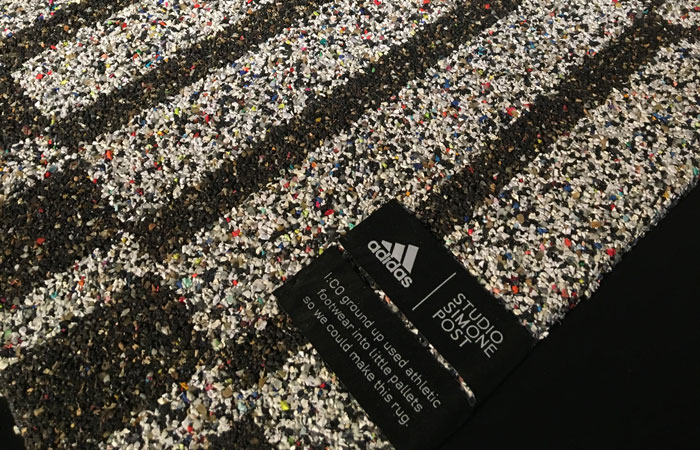
London wasn’t too far behind in the pursuit of bio-based design though. This year the London Design Fair appropriately chose Bio Materials as the Material of the Year, with a selection of work celebrated in a specially selected exhibition. Tjeerd Veenhoven has discovered a clever way of transforming waste Palm Leaves into a useful flexible surface material, whilst High Society gathers even less likely materials including hemp, tobacco and pomace and moulds them into lampshades and other useful interior objects. Martina Taranto directly taps into the power of nature to create Viran Nature Vases, which are made from 84% organic materials and are implanted with seeds that grow and change the objects over time. A flourish of new materials that exude biophilic properties has also gone some way to proving that they’re no fad. The positive stress being applied on improving user wellbeing is being delivered via materials that directly and indirectly reference the natural world, as seen with the moss, bark and preserved flora and fauna based surfaces from the UK based Innerspace and German brand Freund.
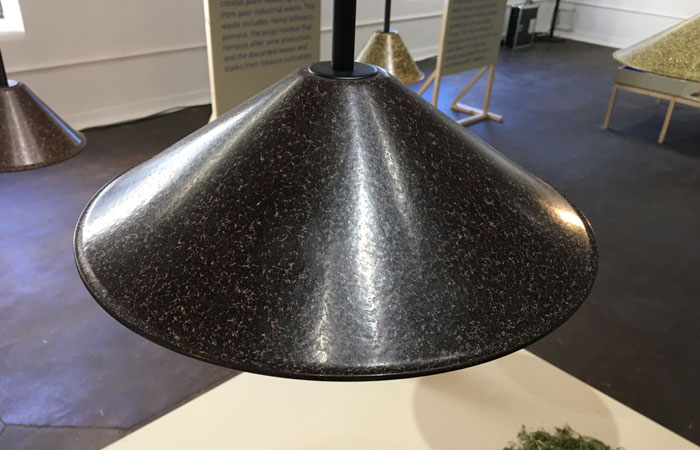
A growing trend for maximalist design has also consistently popped up at events across the calendar year. Few typify this style more than French designer Camille Walala who was once again commissioned to create a special project for London Design Festival. Walala Lounge was a public seating project with bold colour, striking pattern and graphic black lines deployed to brighten up the popular retail stretch of South Moulten Street. Her rug designs could also be seen alongside John Booth’s on the Floor Story stand at the London Design Fair, all of which offered a surge of bold colour amidst the usual Skandi-inspired minimalism of other furniture and interior product brands. Russell Bamber grabbed the attention of visitors of both Clerkenwell Design Week and 100% Design with his colourful sculptural objects that playfully hoover between art and design; their functionality matched and outmuscled by an uncompromisingly bold and vibrant aesthetic akin to that of the pioneers of Memphis Design.
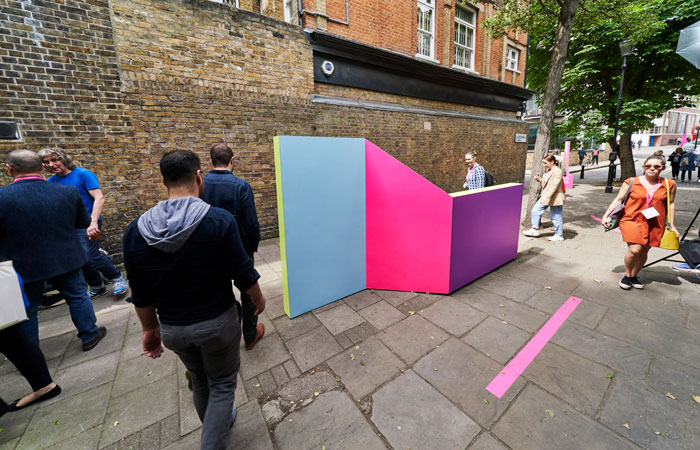
With one eye on 2020 and with it, global concerns surrounding the effects of climate change and continued political unrest, it was fitting to see students from London’s prestigious Central Saint Martin’s school attempting to stoke positive change with their Designing in Turbulent Times exhibition. Curating work under banners such as Designing Alternatives, Designing for Biodiversity and Designing for Conversation, the shared focus was on how we can reduce waste and make a better future. It was a fittingly selfless and ambitious approach from a group of students making work during the centenary celebration of Bauhaus, which has been taking place in Germany all year. The same can be said of the landmark half-century anniversary of the first moon landing, which like the Bauhaus, only occurred because of the ingenuity, cooperation and hard work of a mass of individuals who passionately shared a desire to go above and beyond in taking humankind further that we’d ever been before.




